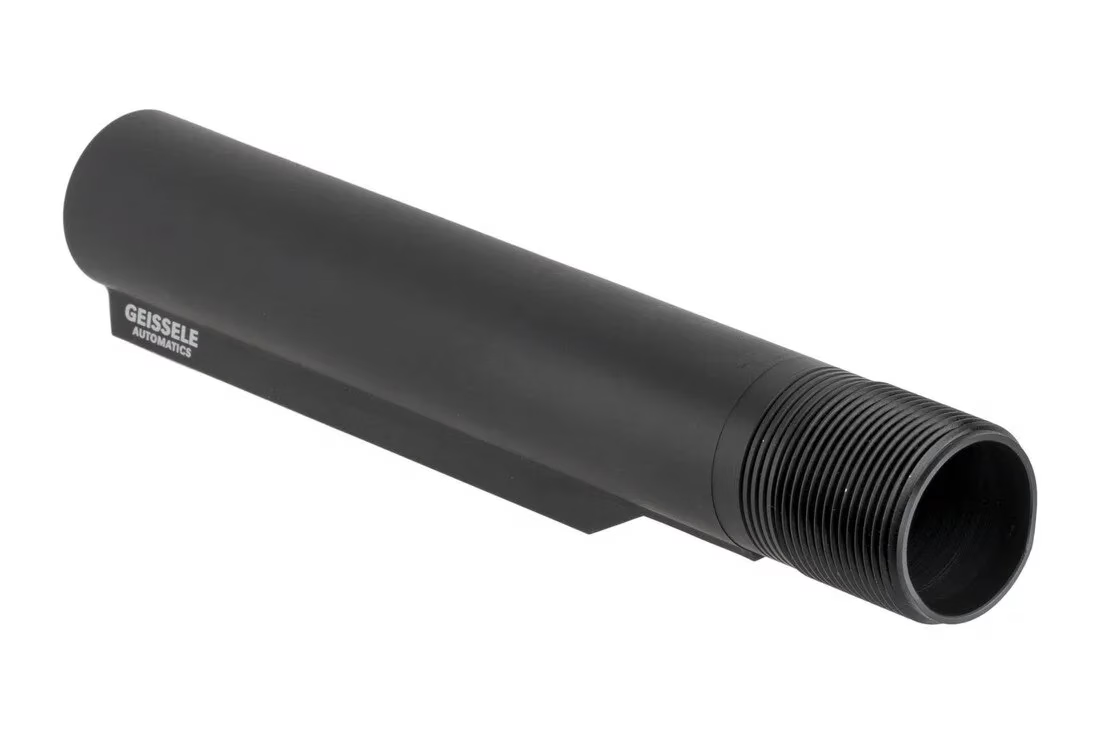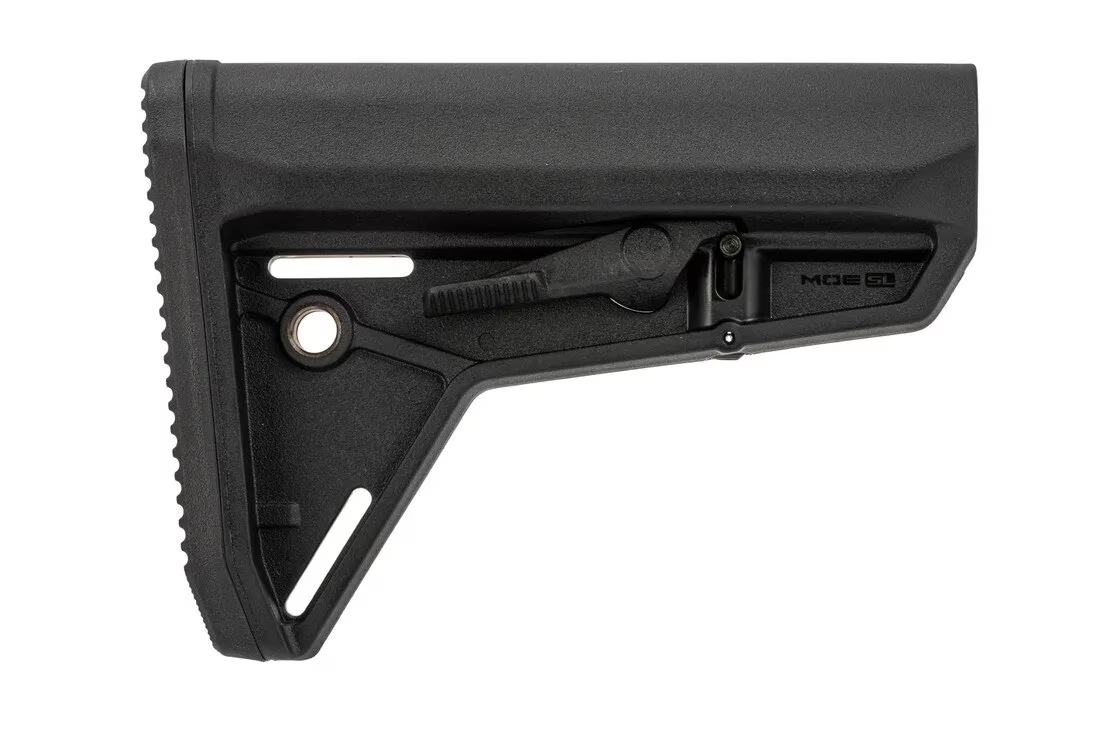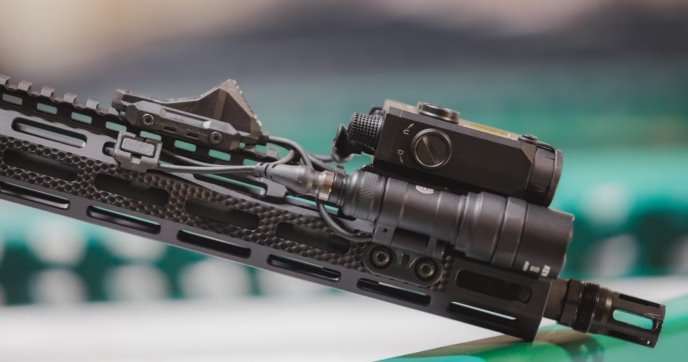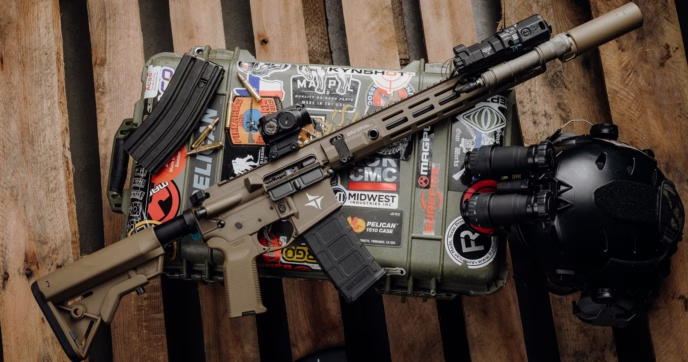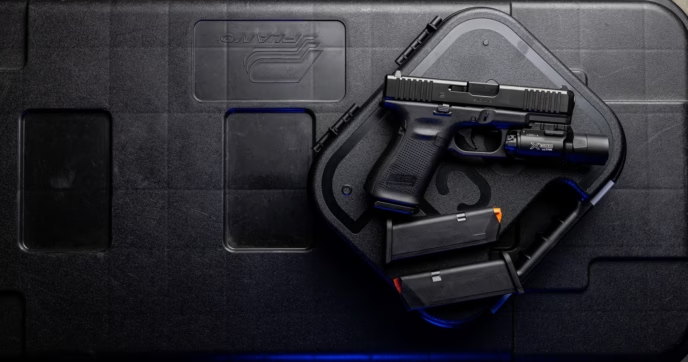The AR-15 is easily one of the most popular rifles ever designed, with one of its most alluring features being its modularity. These rifles can be built with individual components rather than being bought off the shelf, allowing enthusiasts to build their rifles piece-by-piece, granting them full control over what parts go into their builds. Although building an AR-15 isn’t necessarily an arduous process, it does come with a learning curve, especially when it comes to component compatibility. Despite having a standardized design, not all commercially available AR components are compatible with each other.
By far, one of the most common points where compatibility issues can arise is between the stock and buffer tube assembly. Having the wrong combination can lead to various fitment issues that can potentially prevent you from being able to properly install them or use them at all. Fortunately, by knowing what to look for, these fitment issues can be easily avoided, and easy to fix.
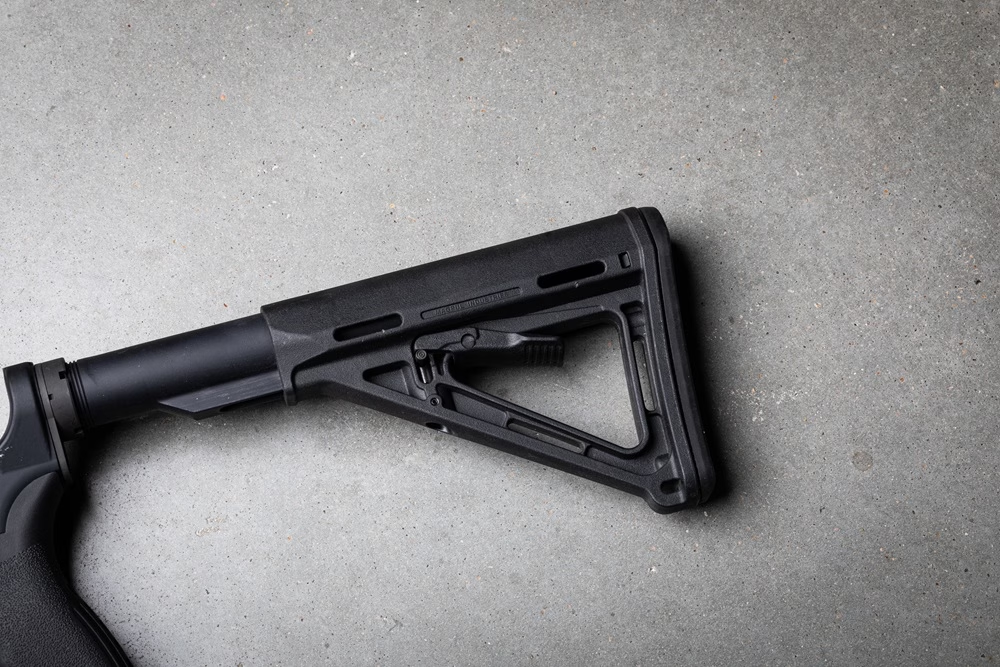
Understanding the Components
Before getting into the weeds on how to achieve proper AR-15 stock fitment, it’s crucial to understand which components make up your stock assembly.
The stock is a critical component, serving as one of the primary points of contact for proper stability and control when firing. AR-15 stocks fit over, and mount onto the buffer tube, and they’re available in many shapes and sizes, with there being a wide array of options suited for different applications and user preferences. Regardless, a proper fitting stock is always necessary, no matter whether you’re shooting from a stable position like in long-range shooting disciplines, or on the move in more dynamic scenarios like competitive or duty applications.
Moreover, the buffer tube is what houses the rifle’s recoil assembly, which includes the AR-15 buffer spring and weight—both of which are needed for cycling the rifle when firing. As important as the buffer tube is, it’s important to recognize that not all of them are created equal. Although all buffer tubes have the same functional purpose, there are multiple variants to choose from, and they each have different dimensions and characteristics that affect their compatibility with different stock options.
Types of Buffer Tubes
Buffer tubes generally fall into one of three categories: mil-spec, commercial, or A2/rifle-length. Although there are more options than just those three, they’re some of the most common ones available. Below is a brief overview of their differences so you’ll know how to find out what buffer tube you have:
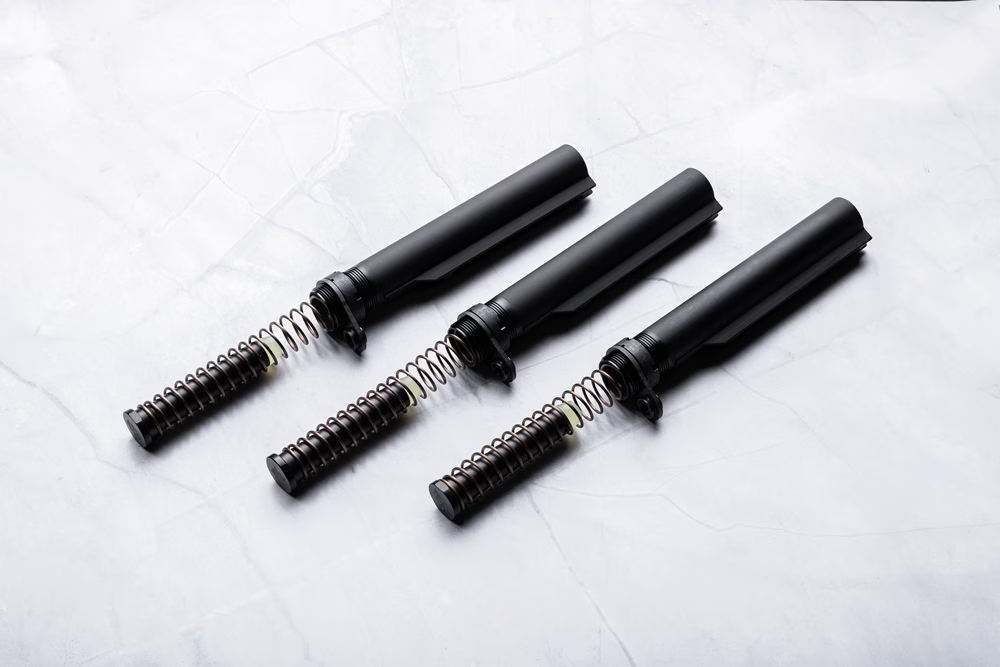
Mil-Spec
Mil-spec buffer tubes are the most common type of buffer tube available. If you’re wondering, “what is mil-spec?”, it’s an abbreviation for the term “military specification”, which refers to the Military production standards for any given component’s dimensions and material construction.
Constructed of 7075-T6 aluminum, mil-spec buffer tubes are both lightweight and exceptionally durable, while their use of a standardized design makes them compatible with most of the stocks available on the market. Additionally, they have an outside diameter of 1.146 inches, come standard with six adjustment points, and have a flat facing on the back for better fitment with adjustable carbine stocks.
Commercial
Commercial buffer tubes are similar to mil-spec ones. They look virtually identical, but they’re slightly wider than mil-spec options, having an overall width of 1.17 inches, and instead of having a flat rear-face, they have a slanted one. Although they aren’t incredibly different from mil-spec tubes, their slight differences are more than enough to cause fitment issues if you aren’t running a commercial-spec stock.
Also, unlike mil-spec options, commercial-spec buffer tubes aren’t held to any rules about standardization. As such, they can be made of weaker materials like 6061-T6 aluminum, which, while strong, doesn’t offer the same level of durability as 7075-T6 aluminum.
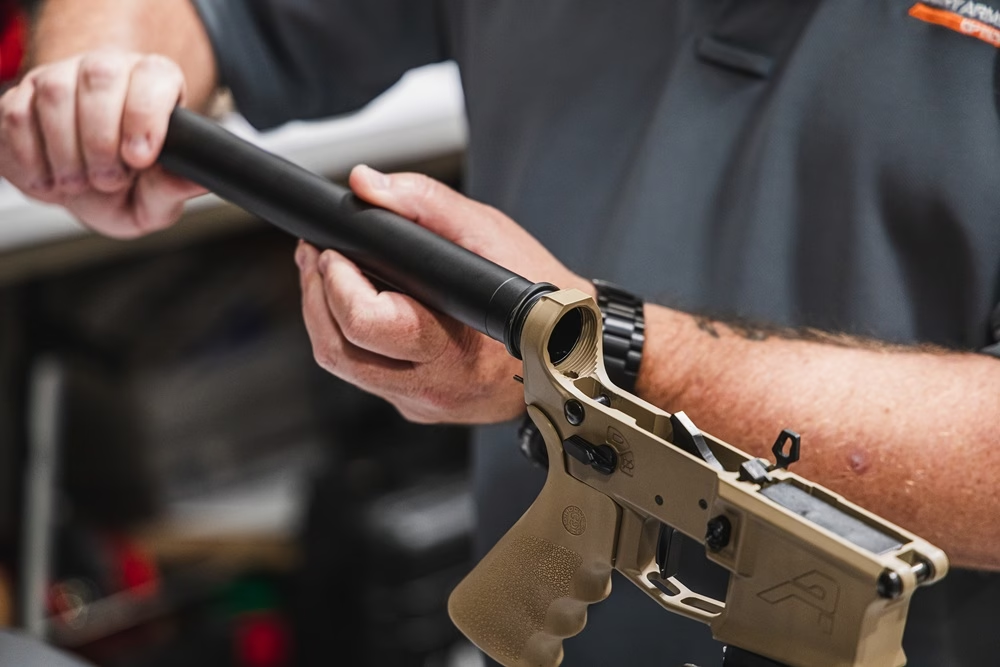
Rifle-Length/A2
Rifle-length/A2 buffer tubes are much longer than both mil-spec and commercial-spec carbine buffer tubes, having been originally designed for fixed stock options like the mil-spec A2 stocks found on rifles like the M16A2. As such, there typically aren’t many issues regarding fitment when using these buffer tubes. Being rifle-length, a carbine AR-15 stock does not fit this buffer tube, so you’ll be locked into using a fixed stock, in most cases. But another key difference between rifle-length tubes and carbine-length ones is their buffer spring and weight compatibility. Due to their longer length, they require a longer spring and specialized buffer weight. Fortunately, you can easily find various rifle buffer kits that include the buffer spring, buffer, and buffer tube, simplifying the installation process.
What do fitment issues look like?
Ultimately, stock fitment issues most often stem from an incompatibility between the buffer tube and the stock, but the specific type of fitment issues you experience can vary depending on what stock and buffer tube combination you’re running.
For example, fitting a mil-spec stock onto commercial buffer tube causes an extremely tight fit, making it nearly impossible to adjust your length of pull, if it even goes on in the first place. In the opposite scenario, fitting a commercial stock onto a mil-spec buffer tube will create a loose fit, which can cause your stock to wobble excessively when firing, or even shift to another position unintentionally.
Ideally, your stock should be able to slide over your buffer tube with no issues and have very little side-to-side movement. Likewise, it shouldn’t be difficult to adjust, and it should lock into place once adjusted to your desired length of pull.
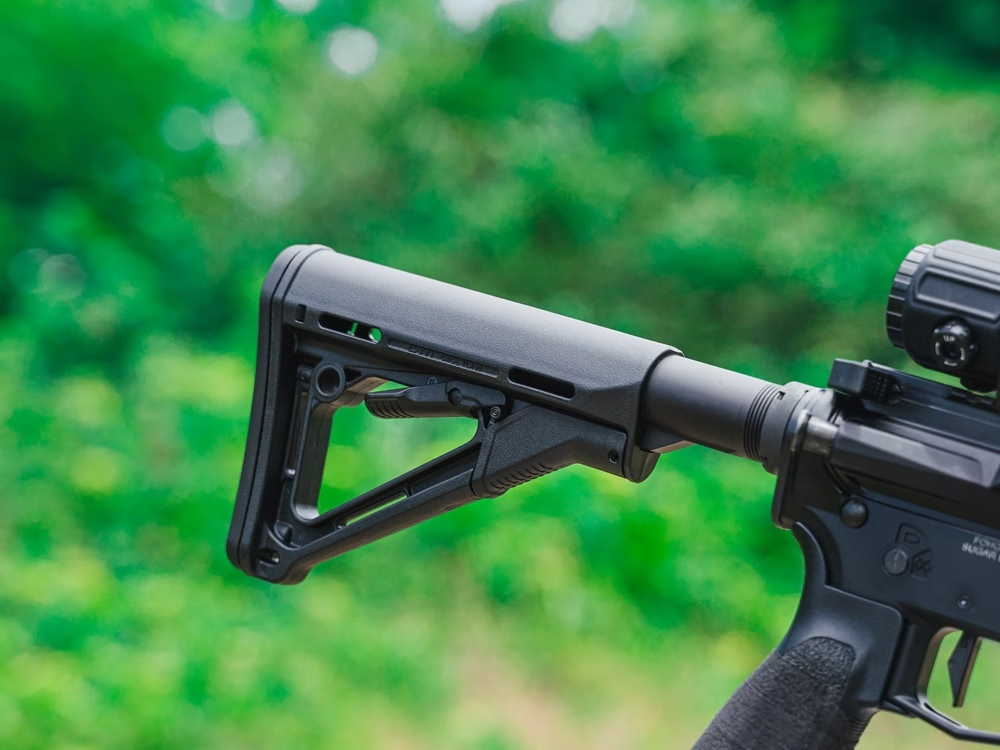
Choosing the Right Size Buffer Tube and Stock
The best way to ensure that your stock assembly won’t have any fitment issues is to make sure that your stock and buffer tube are compatible. As we mentioned above, different buffer tubes have their own distinct characteristics and stock compatibility, so depending on which one you use, you need to choose your stock accordingly.
For most setups, a mil-spec buffer tube is the way to go. Being the most widely available buffer tube choice, they’re generally viewed as the industry standard and are a solid pick for everything from simple recreation to more intensive competitive and duty use. Plus, nearly every carbine stock available is compatible with mil-spec buffer tubes.
Compared to mil-spec ones, commercial-spec buffer tubes aren’t all that common, and there are far fewer stock options to pick from. Their lack of standardization can make shopping for a proper fitting stock a bit challenging, so we recommend going with a mil-spec buffer tube and stock for the best fitment possible.
For fixed stocks, a rifle-length/A2 buffer tube is one of the best options available. Still, you aren’t necessarily locked into using one depending on the stock you opt for. For instance, your standard A2 fixed stock is only compatible with A2-length buffer tubes, while others like the Magpul PRS Gen 3, for example, are compatible with both rifle-length and mil-spec buffer tubes. Keep in mind that this isn’t the case for every fixed stock option, so it’s always a promising idea to double-check each stock’s compatibility before buying.
Importance Of Using the Right Buffer Weight
Finally, although AR-15 buffers don’t really have an effect stock fitment, it’s worth noting the importance of having the right buffer weight in your rifle.
Your rifle’s buffer weight plays a key role in determining your rifle’s recoil impulse and cyclic efficiency. There are a lot of buffer weights available for the AR-15, ranging from standard carbine buffers to heavier H1 and H2 rifle buffer weight options. The buffer weight you choose can have a profound effect on your rifle’s overall performance, and there’s a lot to cover when trying to find the right one for your setup—fortunately, our guide linked above covers all the basics you’ll need to know when choosing one.
Conclusion
The AR-15 is easily one of the most modular and adaptable rifles ever created, allowing you to carefully curate each part that goes into your build. However, the ability to build your rifle piece-by-piece also comes the responsibility of ensuring that each of your components are compatible with each other.
This sentiment rings especially true when choosing your rifle’s stock and buffer tube. Your stock and buffer tube choice play a considerable role in determining your ability to comfortably control your rifle when firing it, and the wrong combination can seriously affect your rifle’s performance.
Regardless of whether you’re building a rifle fit for fast-paced duty or competitive use, or for dedicated long-range applications, having the right stock is critical. We highly recommend double checking to make sure that your stock and buffer tube combo is compatible before buying. So long as they are, you can rest assured knowing you won’t run into any fitment issues when installing them.
